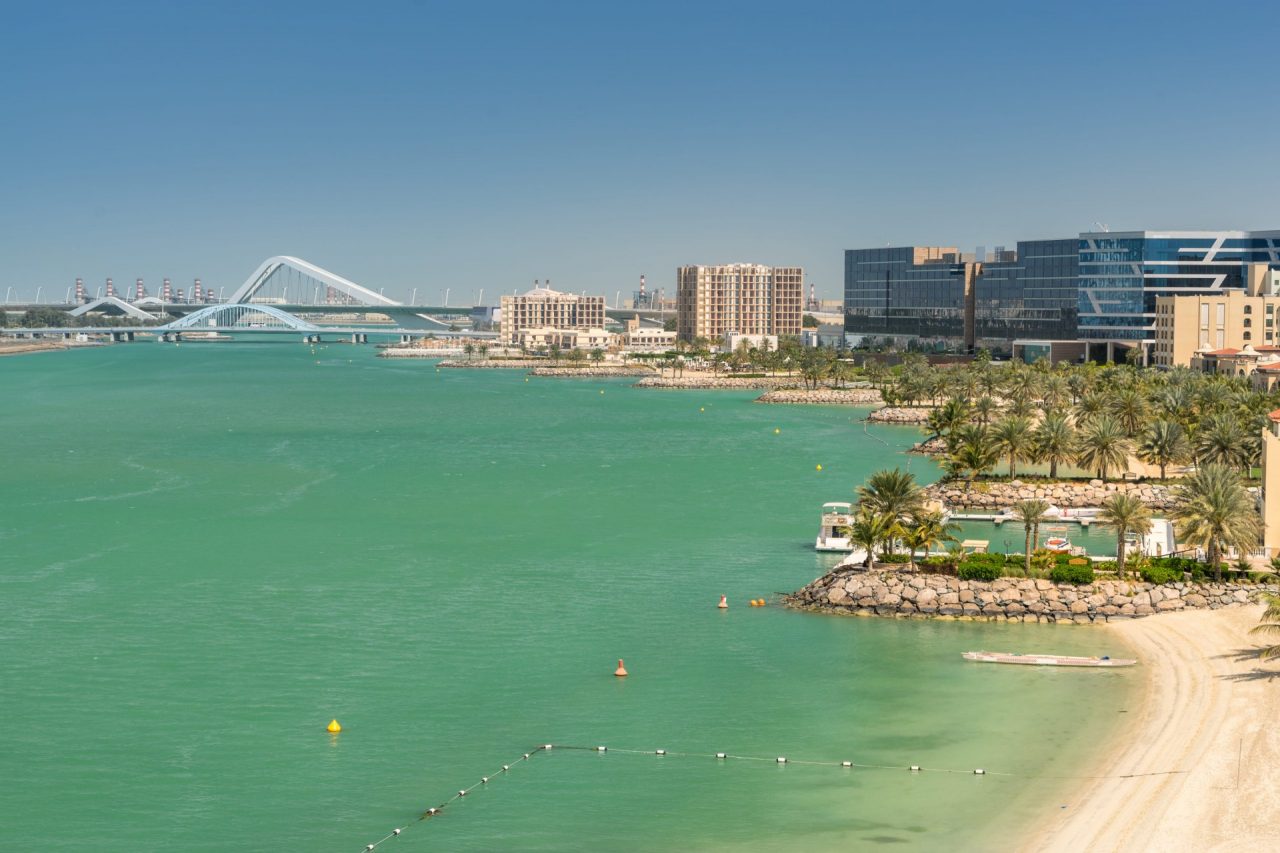Some saw it as the world’s most difficult bridge to build. Others saw it as an impressive fusion of architectural ambition and engineering techniques. Still others saw its value as primarily symbolic—another of Abu Dhabi’s many efforts to show its infrastructural prowess and become an icon of urban development for the United Arab Emirates and the world.
And they’re all correct: the Sheik Zayed Bridge, the 842-metre (2762-foot) bridge north of the Maqta Canal is all of these things combined. This marvel was designed by renowned Iraqi architect Zaha Hadid, who died in 2016 and was the first woman to win the Pritzker Prize. She envisioned it as both a one-of-a-kind work and an engineering feat that would pique global curiosity about the Emirates.
That’s exactly how things have gone. Since its inauguration, the bridge—named for Emiro Zayed, the “father of the nation”— has become, by all measures, the main port of access to the city. Like the Louvre or the Formula 1 circuits have for their respective countries and cities, the bridge has also become a symbol of Abu Dhabi in the world.
Abu Dhabi bridge: the beginning of an “impossible project”
“Year zero” for this impressive work was 2003, when the first foundational stone was laid. Everyone, clients included, was well aware of the project’s complexity, but no one predicted that work would be stalled and postponed on three separate occasions and that both time and costs would increase considerably.
Much of the bridge’s complexity can be seen in Abu Dhabi bridge’s shape. The silhouette resembles three desert dunes; in the construction phase, the shape presented most of the challenges. At the peak of the “dunes,” the structure stands (60 metres) 197 feet high, sloping downward toward the sea and back up again, three separate times. The end result is a sine wave that begins on a beach, dives into the sea twice, and then ends on an island.
Preparing the bridge’s foundations was also a complex operation. First, the sea arm had to be isolated and work was to be carried out on a parallel bridge.
The goal was to build a bridge that was as solid and innovative as it was beautiful. Weathering the elements was a priority: the bridge was designed to withstand temperatures from 0 to 60 degrees Celsius (32 to 140 degrees Fahrenheit), gusts of wind up to 160 km/h (99 mph), and strong earthquakes. Additionally, the canal piling needed to be durable enough to withstand the impact of a barge weighing 1,200 tons.
All these plans were in place from the beginning and were brought to fruition by the 2,500 workers who labored on-site. Everyone’s goal was to create a structure that would combine innovative architectural and engineering techniques. Zaha Hadid vigilantly followed each step in the lengthy and challenging construction process, beginning with the color palette for the arches and bases.

Zaha Hadid bridge: a postcard-perfect example of urban development in Abu Dhabi
The final step in construction came on November 25, 2010, when the Sheikh Zayed Bridge was inaugurated by Sheikh Khalifa, President of the United Arab Emirates. Once work ended and the bridge was operational, it immediately became clear that the bridge would not only be useful in practical terms (urban transport), but in bolstering the image of the Emirates abroad.
The work itself has strategic value for city transport. The bridge’s eight lanes (four in each direction) allow 16,000 vehicles to pass per hour, cutting travel time by 15 minutes from the international airport to downtown Abu Dhabi. Further enhancing the bridge’s overall impact, the Emirates also began construction of a coastal road that passes right on the bridge and connects the outlying area with “Corniche,” the center of Abu Dhabi.
Zaha Hadid’s architectural patrimony
Abu Dhabi called on Zaha Hadid to design such an icon of the Emirates for a reason. Known the world over for her innovative projects, the Iraqi architect took up the challenge with two plans in mind: the first called “zig-zag” and the second “sand dunes.” The idea behind the approved plan was to symbolize desert sand dunes while also creating an arch that served as the gateway to the city. Ù
The Sheikh Zayed Bridge’s design perfectly represents the Baghdad-born architect’s philosophy. (In 2010, she was listed by TIME as one of the world’s 100 most influential personalities). Among Hadid’s best known works are the MAXXI, the contemporary art center in Rome; the Heydar Aliyev Cultural Center in Baku, Azerbaijan; and the Scientific Center of Phaeno in Germany. Like the Sheikh’s bridge in Abu Dhabi, all these works have helped give a new face to their respective territories and cities.

